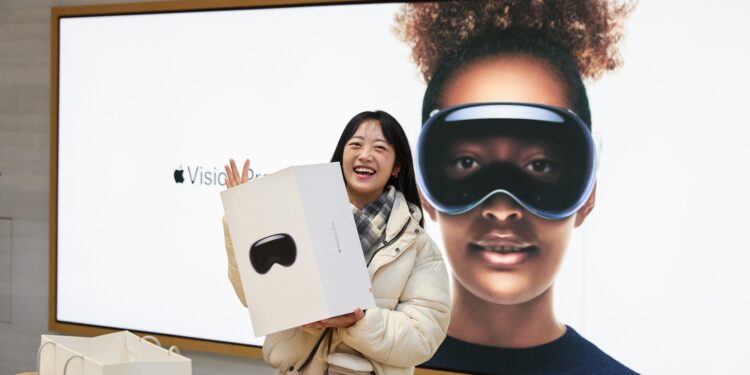Apple has taken a big step into the world of mixed reality technology with the Vision Pro. But at a price of 4,000 euros, the headset remains unaffordable for many. The company seems to be aware of this and, according to Taiwanese market research company TrendForce, is working on strategies to make future Vision models more affordable. Here you can find out how Apple wants to achieve this and what it could mean for you.
The Apple Vision Pro was hailed as a technical masterpiece. However, Apple CEO Tim Cook himself admitted that this device is not a product for the mass market. It is aimed primarily at early adopters who are willing to dig deep into their pockets for cutting-edge technology. With sales of less than 500,000 units in 2024, as estimated by IDC, one thing is clear: Apple must find new ways to reach more customers. The plan for the next generation of Vision headsets could be a decisive turning point.
How Apple wants to reduce production costs
Apple is pursuing loud TrendForce has two main strategies to make the Vision Pro series more accessible.
- Cheaper production through new components
One of the biggest cost factors of the Vision Pro is the high-resolution micro-OLED displays, which are currently supplied by Sony. To reduce production costs, Apple plans to source components from alternative manufacturers. This change could allow Apple to lower the price of the next generation Vision Pro without sacrificing premium quality. TrendForce expects the displays to continue to offer a resolution of over 3,000 pixels per inch. This should keep the device as a high-end product in the field of mixed reality technology. For you, this means you could enjoy the latest technology without having to pay the current premium price.
- introduction of a cheaper mainstream model
In addition to the next-generation Vision Pro, Apple is planning another headset, which it calls a "mainstream Vision headset," according to TrendForce. This model is intended to be more affordable and designed for cost efficiency. To achieve this, less advanced display technologies such as glass-based OLEDs or LCDs with LTPO backplanes could be used. The cheaper model will probably not offer all the features of the Vision Pro, but should still provide access to visionOS, Apple's operating system for mixed reality. This could allow significantly more customers to immerse themselves in the mixed reality world without high entry costs being a hurdle.
future outlook
While TrendForce believes that the next-generation Vision Pro could be released as early as 2026, there are differing opinions on the timeline for the cheaper mainstream model. Well-known Apple analyst Ming-Chi Kuo estimates that this device could only appear after 2027. At the same time, he predicts a more powerful M5 chip for the next-generation Vision Pro, which is intended to replace the current M2 chip.
A broad market for mixed reality: Apple's next steps
Apple's approach to expanding the Vision series via cheaper production methods and a more affordable mainstream model could make mixed reality technology more accessible to many. If these plans work out, Apple will be able to appeal not only to early adopters but also to the wider market. For you, this means that whether you are looking for high-end performance or prefer a cheaper entry-level model, both options could become reality in the future. The next few years will remain exciting - and perhaps you too will soon have the opportunity to experience Apple's vision for mixed reality. (Image: Apple)
- Apple Vision Pro: The biggest innovation of 2024
- Apple Vision Pro could offer cellular connectivity in future models
- PS VR2 controller: Soon compatible with the Apple Vision Pro
- Apple Vision Pro M5: A unique dilemma for Apple
- Apple Vision Pro 2: The right step thanks to AI and M5





